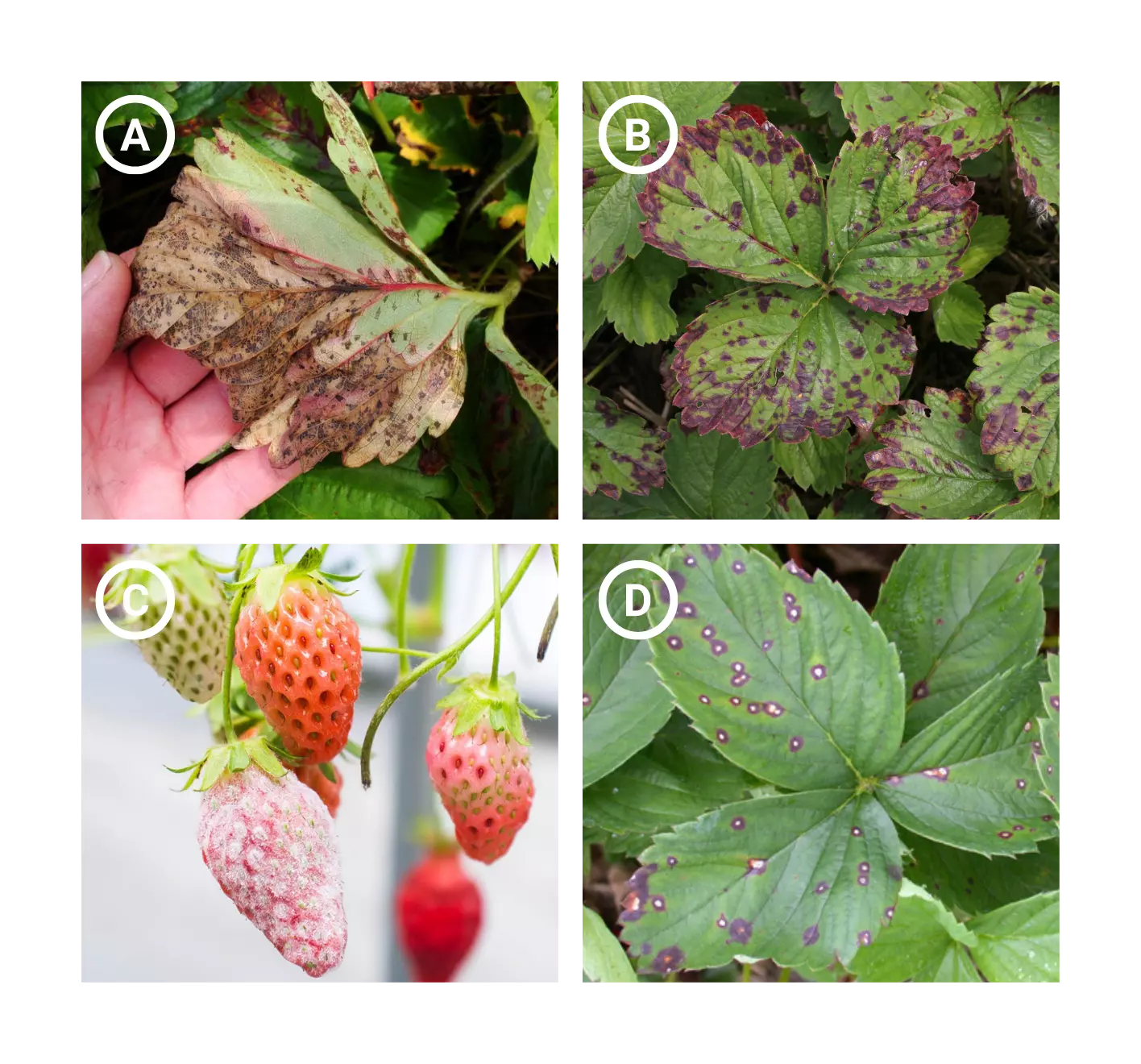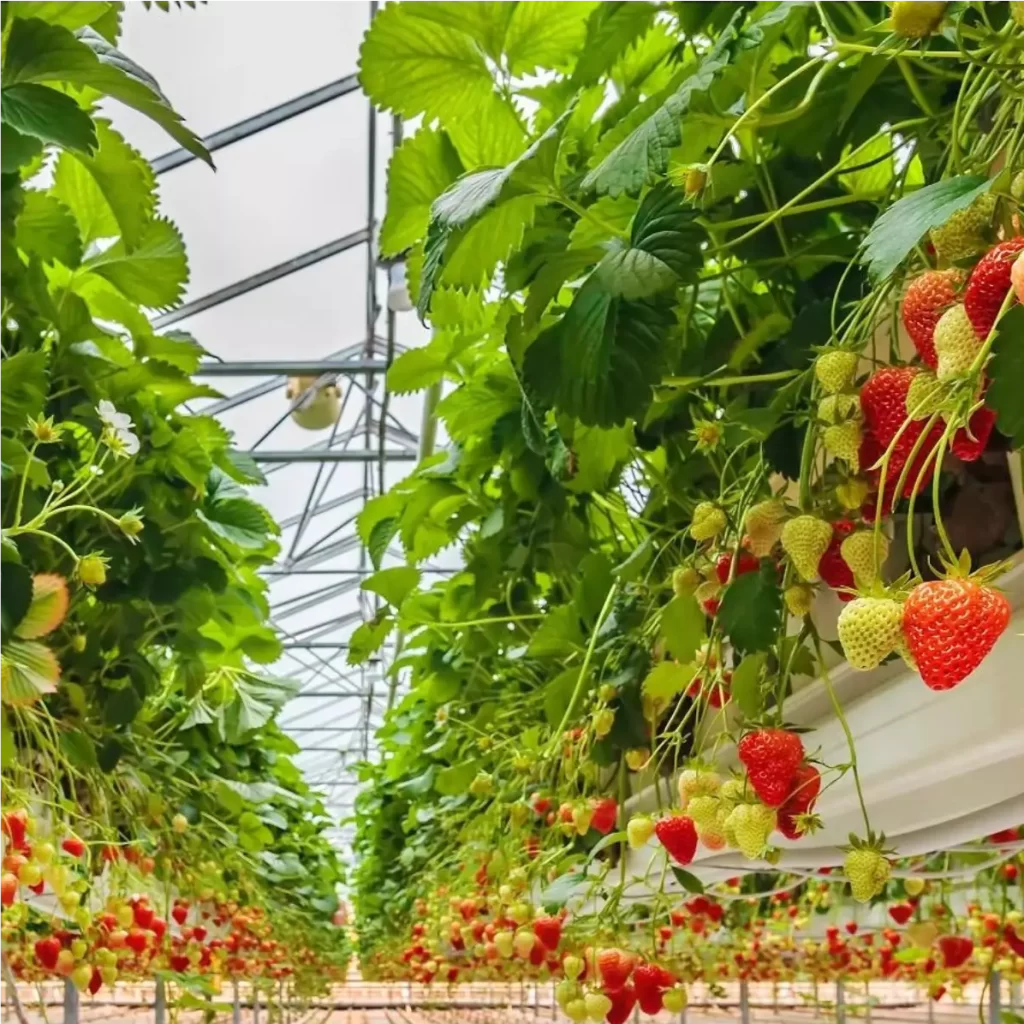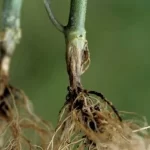The Rise of Hydroponic Strawberries
With an increased prevalence of pathogens in various crops and a development in hydroponic technology, it seems that hydroponic strawberries have become a popular crop among growers. There are many benefits to both growers and Canadian consumers regarding hydroponic strawberries. We will look at some of these benefits and what is being done to support the growth of this crop. We will also take a look at what has led to this increase in hydroponically grown strawberries and what this means for the indoor agricultural industry.
Benefits of Growing Hydroponic Strawberries
Strawberries were the 6th most consumed fruit in Canada, with an average consumption of 2.89 kg per person in 2020 [1]. Figure 2 shows the average consumption of strawberries across a five year period, as well as the other top five most consumed fruits across Canada. With the high demand for strawberries, it is beneficial for growers and consumers that they can be grown year-round in Canada now, thanks to controlled environment agriculture. In Ontario, the average consumer cost of strawberries is $4.53/kg, compared to $2.81/kg for tomatoes or $1.77/kg for lettuce [2]. The higher retail price for strawberries is a large incentive for many hydroponic growers to switch some of their produce to lettuce.

While the price of strawberries remains high; hydroponic strawberries also have other advantages as compared to its field-grown counterparts. Hydroponically grown strawberries can be harvested all year round and not just for six weeks of the year, and they also need less water and are more nutrient-rich than their soil-grown counterparts, which keeps production costs for the farm low [3].
In 2005, Canada and the USA banned using methyl bromide for the fumigation of strawberries [4]. This cut production of the fruit in half and resulted in an increase in the price of strawberries and an increase in imports. The increased cost of strawberries has incentivized Canadian growers to start growing hydroponic strawberries, which can yield higher profits. There is also no need to use methyl bromide or many other pesticides [4].
We provide great overviews of many agricultural microorganisms. Subscribe to stay updated!
Diseases Affecting Strawberries vs. Other Crops
Another benefit for growers is that hydroponic strawberries have not been susceptible to many of the pathogens that many crops have been exposed to in the last few years. Tomato Brown Rugose Fruit virus, Pythium, and Fusarium outbreaks have been some of the pathogens attacking greenhouse vegetables that have had growers switching from crops susceptible to these pathogens to strawberries. However, this does not mean that hydroponic strawberries are not susceptible to any diseases. One major disease in strawberry plants is angular leaf spot caused by the bacterial pathogen Xanthomonas fragariae. Other diseases include gray mold, caused by Botrytis cinerea, Leaf scorch caused by Diplocarpon earlianum and leaf spot caused by Mycosphaerella fragariae [5].

Although these pathogens can severely affect the production of strawberries, some of these detrimental pathogens are more relevant to field-grown strawberries. For example, according to researchers at Michigan State University, angular leaf spot in strawberries is promoted due to cool, wet weather with freezing temperatures at night and overhead irrigation. In hydroponic systems, one thing that growers do not have to worry about is drastic changes in temperature [6]. Other pathogens, such as Diplocarpon earlianum, which causes strawberry scorch leaf disease, also affect field-grown strawberries as opposed to those grown in controlled environments [7].
For grey mold it is important to constantly monitor humidity and moisture levels, which may be easier to do in hydroponic systems as compared to field counterparts. This small adjustment is also a lot easier to do to control this disease as compared to things that need to be done to prevent other diseases such as ToBRFV. To read more about Grey mold in fruits and vegetables, you can check out our pathogen profile on Botrytis cinerea[8].
What is being done to help hydroponic growers?
The Canadian government has seen the benefit of hydroponically fruits and vegetables, and the Canadian Agriculture Partnerships program has a section for innovative and sustainable growth. This partnership provides funding of $690 million to aid in projects related to leading-edge discovery and applied science, and innovation driven by industry research priorities [9]. The government has also put together funding to help growers looking to expand into different markets. The $20.5 million AgriCompetitiveness program aims to assist industry-led efforts to provide producers with the information needed to build capacity and support the sector’s development [9]. To learn more about all programs available for growers, please visit the Canadian Agricultural Partnerships page.
Specifically for berries, there is the homegrown challenge that encourages Canadian farmers to find innovative ways to grow berries year-round. This $33 million dollar project is funded by the Weston Family Foundation and over six years, will identify teams and support the development of tools and technologies that enable Canadian farmers and producers to sustainably and competitively grow berries out of season. You can learn more about the project by visiting their website.
It is important to detect the pathogens as early as possible to avoid their spread throughout the greenhouse. To ensure a clean system, growers should test at various growing stages, from propagation to harvest. To learn more about how you can get your system tested for pathogens such as the ones mentioned above, check out our services page.
References
- Statistical Overview of the Canadian Fruit Industry 2015. (2021). www.agr.gc.ca
https://agriculture.canada.ca/sites/default/files/documents/2021-08/fruit_report_2020-eng.pdf\ - Lettuce price in Canada – 2022 prices and charts. (n.d.). Retrieved November 22, 2022, from https://www.selinawamucii.com/insights/prices/canada/lettuce/
- https://humboldtssecretsupplies.com/blogs/articles/growing-strawberries-in-hydroponics
- imply Hydroponics – Strawberries. (n.d.). Retrieved November 22, 2022, from https://www.simplyhydro.com/strawberries/
- Home Lawn & Garden: Strawberries Through the Whole Growing Season | Center for Agriculture, Food, and the Environment at UMass Amherst. (n.d.). Retrieved November 22, 2022, from https://ag.umass.edu/home-lawn-garden/fact-sheets/strawberries-through-whole-growing-season
- Schilder, A. Watch out for angular leaf spot in strawberries – MSU Extension. (May 01 2022). Retrieved November 22, 2022, from https://www.canr.msu.edu/news/watch_out_for_angular_leaf_spot_in_strawberries
- Barnett, T. Strawberries with Leaf Scorch Treating Strawberry Leaf Scorch Symptoms. (n.d.) Retrieved November 23, 2022, from https://www.gardeningknowhow.com/edible/fruits/strawberry/strawberries-with-leaf-scorch.htm
- Irani, T. Pathogen Profile: Botrytis cinerea | Healthy Hydroponics.(March 23 2022). Retrieved November 22, 2022, from https://www.healthyhydroponics.ca/2022/03/23/pathogen-profile-botrytis-cinerea/
- Canadian Agricultural Partnership: Federal activities and programs – agriculture.canada.ca. (n.d.). Retrieved November 22, 2022, from https://agriculture.canada.ca/en/about-our-department/key-departmental-initiatives/canadian-agricultural-partnership/canadian-agricultural-partnership-federal-activities-and-programs#a2
Disclaimer:
The information we present in Pathogen Profile is based on collating published peer-reviewed scientific literature and sources we think are reliable. This is by no means an exhaustive review of pathogens. Pathogen Profile gives a small glimpse of what is known about pathogens, and we encourage growers to do more research on their own based on the pathogens in relation to their own crops and hydroponic systems. We are not plant pathologists thus the information presented in Pathogen Profile should not be used as professional advice to treat pathogens or operate your hydroponic system.
![]()
Tanya Irani is a Bioinformatician and Agriscience Advisor at Healthy Hydroponics





